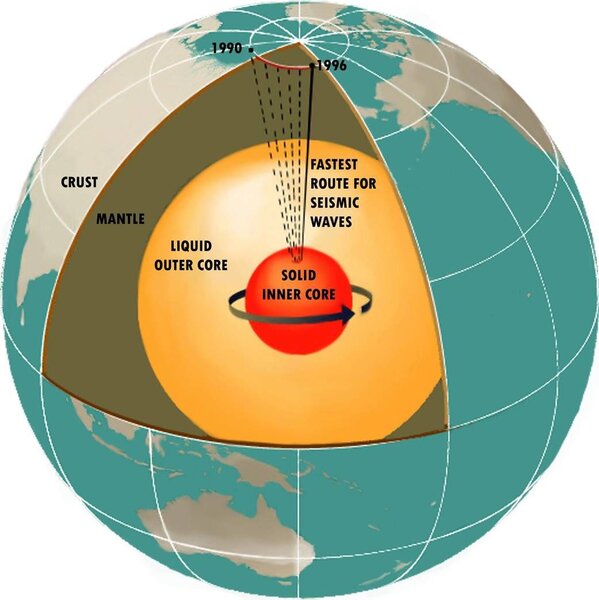Create a free profile to get unlimited access to exclusive videos, sweepstakes, and more!
Journey to the Center of the Earth? Newly discovered subterranean mountains rival Everest

Even after dodging ball lightning, encountering live dinosaurs and something that could very well be Bigfoot, and getting spewed out by a monster volcano, there is one thing even Jules Verne’s Professor Lidenbrock didn’t see when he ventured toward our planet’s core.
There are mountains in the bowels of the earth. Ginormous mountains so huge that even Mount Everest has nothing on them, if you can believe what scientists just unearthed in a new study published in Science. It was seismic wave data from a 1994 Bolivia earthquake that Princeton geophysicists Wenbo Wu, Jessica Irving, and colleagues really dug into to find a glimpse of evidence that mountains are not just part of our planet’s surface, but also its innards.
When there is a major geological disruption like an asteroid crash or earthquake, seismic waves are the energy ripples that travel through Earth and bounce off various minerals, structures, and textures. Think of how light waves bounce off an object in the phenomenon otherwise known as reflection. Now imagine seismic waves making it through the mantle and bouncing off the 660-kilometer discontinuity, the boundary that splits this dense layer of silicate rock into an upper and lower level — and possibly further.
Seismic waves are also one of the only ways to “see” Earth’s insides so long as we have no technology advanced enough to delve that deep. Whatever they bounce off of gives us an idea of what Earth looks like on the inside. In this case, they bounced off an entire mountain range that could out-Everest even Mount Everest at some points.
“We need big earthquakes to allow seismic waves to travel through the mantle and core, bounce off the 660-kilometer discontinuity, and travel all the way back through the Earth to be detected at the top of the crust,” Irving told Motherboard.
Wu, Irving, and their team were able to roughly figure out the topography of the boundary after analyzing measurements from the 1994 quake (the second most massive earthquake ever at an 8.2 on the Richter scale) with Princeton’s Tiger supercomputer cluster. There is no way of getting an exact height on these subterranean mountain peaks on the 660-kilometer boundary, but Irving said they “could be bigger than Everest.”
What formed these mountains that Professor Lidenbrock would have probably marveled at? It is possible that chunks of ancient seafloor collapsed into the mantle and accumulated into these mountains. This could mean that pieces of Earth from when it first formed are just waiting to be discovered, and with them, clues about planetary evolution that could apply to worlds beyond the rock we live on.
Will we ever really journey to the center — okay, mantle — of the Earth and climb those immense peaks? For now, only a really genius sci-fi author could take us there.
(via Motherboard)















